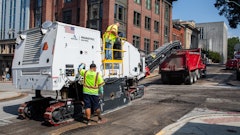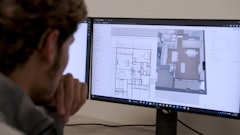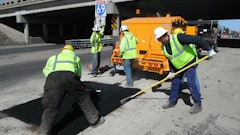
The Association of Equipment Manufacturers (AEM) has partnered with The Brookings Institution for a new report: “Rebuild With Purpose: An Affirmative Vision for 21st Century American Infrastructure."
With the report, AEM is announcing its commitment to a set of national policy priorities to revitalize the infrastructure systems that move the American economy and outlines how infrastructure can continue to build long-term American competitiveness. AEM emphasizes that the report is not tied to current political cycles, legislative calendars, or which elected officials fill the country’s legislative chambers and executive mansions. But that the purpose of the report is to recommend shared priorities for a forward-looking national vision, justify them with rigorous research and use those priorities to craft high-level strategies to inform policy change.
“Equipment manufacturers believe that rebuilding and modernizing our nation’s infrastructure is always an optimistic choice,” said Dennis Slater, president of AEM. “It reflects the collective belief that we need to make a transformational investment in infrastructure to grow our businesses, improve our quality of life and protect our environment for the generations to follow. ‘Rebuild With Purpose’ reflects many of the policy priorities advanced by AEM’s Infrastructure Vision 2050, and we urge the business community and policymakers to embrace an affirmative vision for 21st century infrastructure and break free from the same old policies that have failed to move our country forward.”
Four Key Priorities
The report identifies four key levers for action to solve today’s challenges and capture future opportunities: Fiscal Health, Resilience, Workforce and Digitization (FRWD):
1. Fiscal Health:
The country cannot modernize infrastructure systems if state and local governments do not have the fiscal resources they need. The U.S. lags behind its global peers in infrastructure spending. Many states spend below 1% of annual expenditures on deferred maintenance, leaving an estimated $873 billion maintenance gap in state capital budgeting. Federal policymakers must help states and localities overcome many ongoing fiscal barriers.
2. Resilience:
Equipment manufacturers are leading the way in creating a more resilient economy. The planet’s worsening climate crisis requires a resilient built environment to protect and empower communities. Increasingly extreme weather patterns, resource scarcity, and more frequent and catastrophic disasters need infrastructure solutions. We need policymakers to support policies that modernize our grid, lower carbon emissions, and incentivize decarbonization throughout the manufacturing sector and its supply chains.
3. Workforce Development:
The American workforce needs stronger pathways to middle-skill careers with family-sustaining wages. More than a quarter of all infrastructure related workers are projected to retire or permanently leave their positions over the next decade and the manufacturing industry faces a potential 2.4 million unfilled positions between 2018 and 2028 due to skills gaps. Our elected officials need to support the creation of a robust talent pipeline and focus on developing advanced technical skills and flexible training opportunities for all Americans.
4. Digitalization:
The digital economy is transforming how businesses operate and people connect. To remain competitive, U.S. manufacturers will need to quickly adapt to increase access to digital resources and educate its workforce to acquire necessary technical skills that are in high demand. But the lack of broadband access has made it a lot harder for rural farms, manufacturing facilities businesses to compete. As of 2019, 25% of American farms had no form of internet access and 72% of farms without high-speed access. The takeaway: expanding broadband access keeps the United States competitive and all of its people connected. It is crucial that U.S. policymakers pass legislation that creates funding to help more people in more places.
Call to Action
With a generational opportunity to rebuild our nation’s infrastructure, AEM says the time to act is now. To make sure we make the right kinds of transformational investments, equipment manufacturers are championing four key recommendations that will restore America’s economic competitiveness, enhance equipment manufacturers’ ability to meet the challenges and opportunities of the 21st century, and improve the lives of all Americans:
- Expand broadband connectivity, skills programming, and sensor deployments that deliver economic efficiency and equity in the digital age.
- Create new sector partnerships, expand work-based learning programs, and more visible outreach to disadvantaged and underrepresented workers to ensure infrastructure industries serve as a growing source of economic prosperity.
- Ensure states and localities are on a stable fiscal footing so that they can boost net infrastructure investment and experiment with new data and technology throughout the infrastructure design, planning, and construction process.
- Transition to renewable energy sources, limit development in vulnerable locations, and adopt more resilient building standards that can help avoid the worst environmental impacts while still adapting to an evolving climate
A sweeping infrastructure vision has the power to simultaneously deliver environmental resilience, harness the digital transformation, retrain American workers and reinforce fiscal health for generations to come. The time for Congress to get something done is now.




























